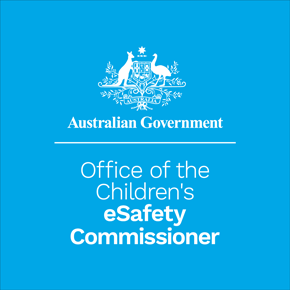Keeping up with the cyber kids
 by Senior Constable Mike Brantz
by Senior Constable Mike Brantz
A few months ago, as I was walking past my teenage daughter’s bedroom, I looked in to see her staring intently at her iPhone. I stopped and asked her what she was looking at, to which she replied, ‘I’m talking to ‘…………..’ on Snapchat’.
I walked away pretending to know what that meant, but thinking to myself ‘I’ve heard of Snapchat – but I have no idea how it works’. I realised that I needed to increase my digital IQ.
It was around this time I received an email from the Gympie District Crime Prevention Coordinator spruiking an upcoming ‘Cyber Safety Workshop’. Given my poor digital knowledge I went along – hoping to learn enough to keep me one step ahead of my kids.
The workshop, presented by Greg Gerhart from the Office of the Children’s eSafety Commissioner, was packed full of facts, information and useful tips. For example, did you know that almost 1 in 3 teenagers are accessing the internet between 10pm and midnight?
Gerhart explained that the office is committed to helping young people have safe, positive experiences online and encouraging behavioural change, where a generation of Australian children act responsibly online—just as they would offline.
Most of us would agree that our children benefit from being online. School work, research, staying connected to family and friends and entertainment are all positive aspects of internet use identified by parents.
There are also plenty of risks including cyberbullying, trolling, access to inappropriate content, sharing personal information and excessive use. It’s knowing what the risks are and how to minimise them that is important.
The Office of the Children’s eSafety Commissioner’s website – www.esafety.gov.au – provides a heap of useful resources for parents and carers.
I highly recommend browsing through this site and checking out their ‘iParent’ section, which provides guidance on a huge range of online issues such as internet safety, parental controls, online risks and balancing screen time.
There’s also a ‘Quick guide to popular social media sites and apps’ which provides a description of each of the current social media platforms, including answers to the following questions for each of them;
- Who can access this? (i.e. are there age restrictions?)
- How can I protect my information?
- How can I report cyber bullying or abuse?
- Are there ways to spend money?
- Where can I get more information?
So now I know what Snapchat is and how it works! More importantly I’ve learned that the best way parents can keep children safe online is to prevent harmful behaviour from occurring in the first place through education and staying involved in their child’s use of technology – because no parental control tool by itself is 100 per cent effective.
How much is too much?
Australia’s National Physical Activity and Sedentary Behaviour Guidelines *
| Your child’s age | Recommended screen time |
| Under 2 years | Zero.
Babies and toddlers should not watch any television or other electronic media (DVDs, computers and electronic games). |
| 2 to 5 years | Less than one hour per day.
Limit their time sitting and watching TV or using other electronic media to less than one hour per day. |
| 5 to 17 years | Less than two hours per day.
Limit their use of electronic media for entertainment (i.e. TV, computers and seated electronic games) to no more than two hours per day. |
*These guidelines are for entertainment purposes only and do not include screen time for educational purposes.
Managing online time
summarised from www.esafety.gov.au
There are many ways you can help your child maintain a healthy balance between online and offline activities for the benefit of their health and wellbeing.
Talk to your kids Monitor the games, apps and devices your kids buy and then chat about any concerns you have.
Find a balance Very important – encourage a mix of non-screen entertainment and socialising opportunities.
Set screen time limits Set clear rules about when and for how long your child can play games or use the internet. A minor reduction each day or ‘15-minutes to switch-off’ warning can help the transition. Why not reduce your own screen time?
Create a screentime plan Set clear boundaries as a family for online and offline activities. It could include a schedule and control of access with daily passwords revealed once family time, homework and chores are complete. Try to avoid using screen time as a punishment as this approach may inflate its importance to children.
Filter their access You could install a filter that limits times an internet connection is available.
Open location Locate your kid’s devices in a shared or visible place in the home.
Seek help You can talk to your child’s school counsellor or GP, Kids Helpline (1800 55 180) or eHeadspace (1800 650 890).






